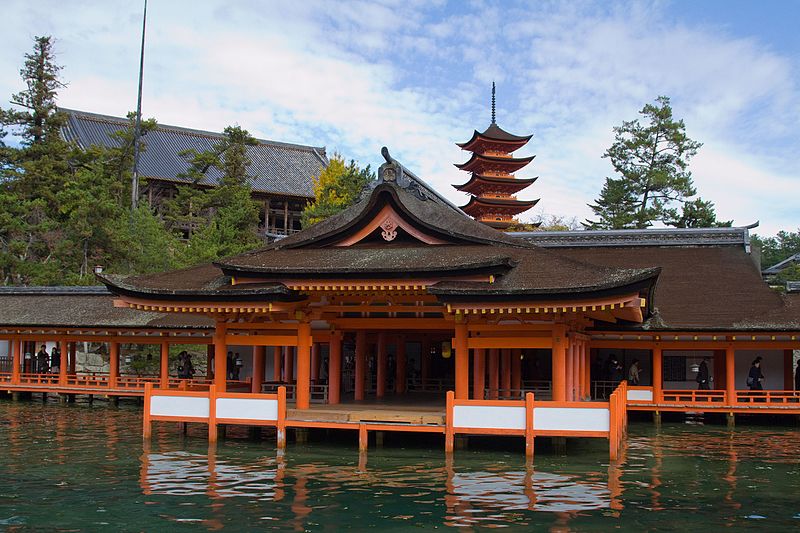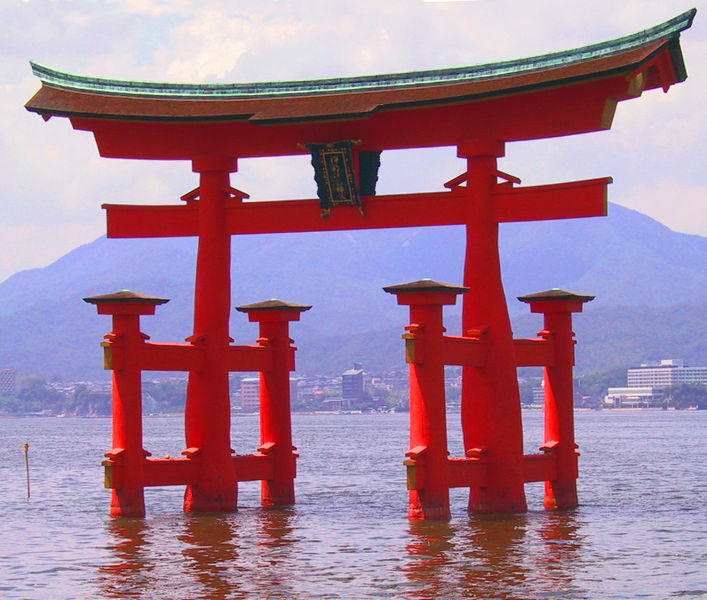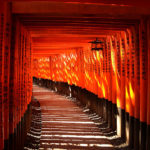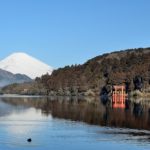Famous torii gate in the sea and historic Itsukushima Shrine

UNESCO designated Itsukushima Shrine as World Heritage Site in 2006. It is at Miyajima Island, Hiroshima Prefecture and the most popular sightseeing spot the Chugoku region in Japan.
The red buildings and torii gate in the calm sea brings about an air of mystery. The shrine with more than 1400 years history has attracted countless people even though it is far away from Kyoto.
The architecures, cultural properties, and annual event including dances provide us a valuable opportunity to know traditional Japanese culture.
Itsukushima Shrine
Why in the sea?
Since the buildings have been in the water’s edge, they have received the damage from the wave and wind. Why was the shrine built such a dangerous place?
Before the establishment of the head of a powerful family Saeki-no Kuramoto in 593, the whole of Miyajima Island had been an object of faith as holy nature. The people had awesome feeling and respect for it.
So they avoided stepping into the inside of the island directly. That’s why the shrine and torii stand in the sea.
Big Torii

The height of the red torii is about 16m. The woods are camphor trees.
At a glance, the columns are buried in the ground. But it’s not true. The grand red gate just stands with its weight on the ground. Since the upper column has a 7t stone inside, the Big Torii doesn’t shake even the earthquake or hurricane come. And the six piers support firmly.
Architecture
The shrine of the style is Shinden-zukuri. That is the representative of a nobles’ residence in the Heian Period. Twenty buildings are National Treasures or Important Cultural Properties of the country.
Originally the shrine wasn’t so big. The head of the Heike Family Taira-no Kiyomori (1118-1181) who had the immeasurable power at that time deeply worshiped Istukushima Shrine as a guardian deity of Heike. So he extended the buildings in a great way and it keeps the appearance of those days still now with many repairing and rebuilding.
The consist of the architectures
- Main Shrine
- Marodo Shrine (Shrine for the Guest Deity)
- Haraiden (purification hall)
- Asazaya (used for the Shinto morning ceremonies, as the word asa means morning)
- Taka-Butai (High Stage)
- Hira-butai (Open Stage)
- Migi-kamadoro Shrine (Right gate guard)
- Hidari-kamadoro Shrine (Left gate guard)
- Sagaku-bo (Right gagaku dance music hall)
- Ugaku-bo (Left gagaku dance music hall)
- Daikoku Shrine
- Tenjin Shrine
- Naga-bashi (Long Bridge)
- Sori-bashi (Arched Bridge)
- Noh Stage
- Corridors
Tide time
You can walk and get to Big Torii at the low tide. But the high tide is essential to the beautiful scenery of Itsukushima Shrine and the torii gate. It’s better to check in advance before you visit the shrine.
Tide Times
It’s good to know the tide time of Miyajima easily.
Tide 4 Fishing
It’s a site for a sea fishing. So you can know not only the tide time but also the weather closely.
Fee
Shrine
Adult:300 yen, High school:200 yen, Junior high or elementary school:100 yen
Treasure House
Adult:300 yen, High school:200 yen, Junior high or elementary school:100 yen
Shrine+Treasure House
Adult:500 yen, High school:300 yen, Junior high or elementary school:150 yen
Opening hour
1/6-2/28:6:30-17:30
3/1-10/14:6:30-18:00
10/18-11/30:6:30-17:30
12/1-12/31:6:30-17:00
Itsukushima Shrine has is really attractive. But the shrine is not the only sightseeng spot in Miyajima.






